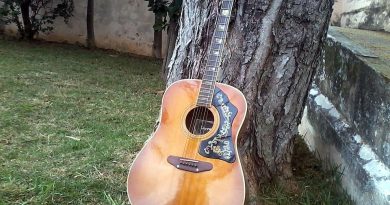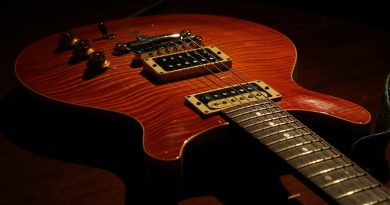Mastering 7th Chords: A Comprehensive Guitar Chords Guide
Mastering 7th Chords: A Comprehensive Guitar Chords Guide
Introduction to 7th Chords
7th chords are an essential component of every guitarist’s toolkit. These chords add color, depth, and complexity to your playing, allowing you to create more interesting and sophisticated sounding progressions. In this comprehensive guide, we will delve into the world of 7th chords, exploring their different variations and how to incorporate them into your playing.
Understanding the Basics of 7th Chords
A 7th chord is formed by adding a seventh note to a standard triad, which consists of the root, third, and fifth notes of a scale. The seventh note is usually added on top of the triad and can be a major, minor, or diminished seventh. The most common types of 7th chords are major 7th, dominant 7th, minor 7th, and minor 7th flat 5.
Mastering Major 7th Chords
Major 7th chords are known for their smooth and dreamy sound, making them a popular choice in jazz and bossa nova music. To play a major 7th chord, simply add the seventh note of the scale to a major triad. For example, the major 7th chord in the key of C would consist of the notes C-E-G-B. Practice playing major 7th chords in different keys to familiarize yourself with their unique sound.
Exploring Dominant 7th Chords
Dominant 7th chords have a strong and bluesy sound, making them a staple in rock, blues, and jazz music. To form a dominant 7th chord, add a minor seventh note to a major triad. For instance, the dominant 7th chord in the key of E would include the notes E-G#-B-D. Experiment with different voicings and inversions of dominant 7th chords to create interesting and dynamic progressions.
Diving into Minor 7th Chords
Minor 7th chords have a melancholic and introspective quality, making them perfect for ballads and emotional pieces. To play a minor 7th chord, add a minor seventh note to a minor triad. For example, the minor 7th chord in the key of A would consist of the notes A-C-E-G. Practice transitioning between minor 7th chords in different keys to enhance your chord vocabulary.
Mastering Minor 7th Flat 5 Chords
Minor 7th flat 5 chords, also known as half-diminished chords, have a mysterious and unresolved sound, making them a favorite in jazz and fusion music. To form a minor 7th flat 5 chord, combine a diminished triad with a minor seventh note. For instance, the minor 7th flat 5 chord in the key of D would include the notes D-F-Ab-C. Experiment with incorporating minor 7th flat 5 chords into your playing to add a touch of sophistication to your compositions.
Tips for Mastering 7th Chords
1. Practice regularly: The key to mastering 7th chords is consistent practice. Dedicate time each day to familiarize yourself with different chord shapes, voicings, and progressions.
2. Experiment with different inversions: Try playing 7th chords in various inversions to discover new and interesting sounds. This will also help you improve your finger dexterity and chord transitions.
3. Learn songs that incorporate 7th chords: Studying songs that feature 7th chords will give you a better understanding of how to use them effectively in your own playing. Pay attention to the chord progressions and how they enhance the overall musicality of the piece.
4. Use a metronome: Practicing with a metronome will help you improve your timing and rhythm when playing 7th chords. Start slow and gradually increase the tempo as you become more comfortable with the chords.
5. Record yourself: Record yourself playing 7th chords to track your progress and identify areas that need improvement. Listening back to your recordings will also help you develop a critical ear for your playing.
6. Seek guidance from a mentor: If you’re struggling to master 7th chords, consider seeking guidance from a guitar teacher or mentor. They can provide personalized feedback and tips to help you improve your skills.
Conclusion
Mastering 7th chords is an essential skill for any guitarist looking to elevate their playing to the next level. By understanding the fundamentals of major 7th, dominant 7th, minor 7th, and minor 7th flat 5 chords, and incorporating them into your practice routine, you can enhance your chord vocabulary, creativity, and musical expression. Experiment with different chord voicings, progressions, and styles to discover your unique sound and develop a deeper appreciation for the versatility of 7th chords in guitar playing.






